People
Is It Time for a Land Art Renaissance? Jessica Morgan on Her Ambitious Vision for Dia in New York and Far, Far Beyond
We spoke to the Dia Art Foundation director about the possibilities she is most energized about for the future.
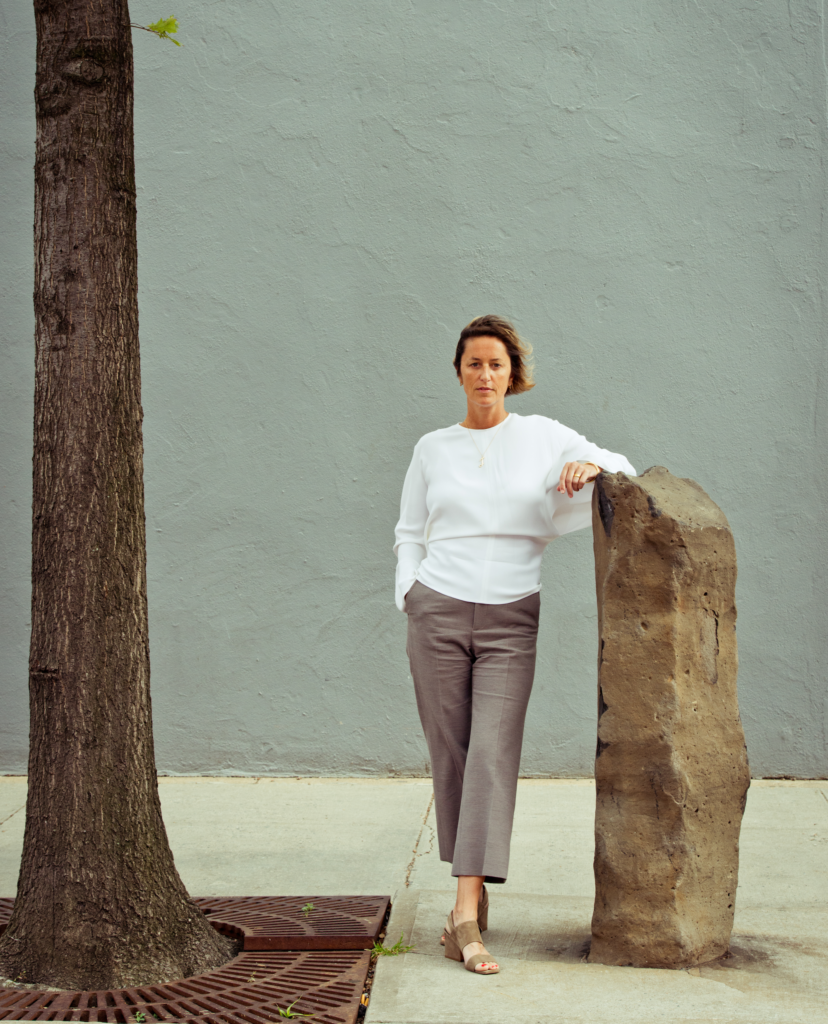
We spoke to the Dia Art Foundation director about the possibilities she is most energized about for the future.

Andrew Goldstein

![]()
The Dia Art Foundation has never been your typical museum. Created by an offbeat trio of utopian dreamers—one of whom, Schlumberger oil heiress Philippa de Menil, had access to extraordinary amounts of money—the organization was founded to bring into being ambitious works of art that were not supported by the existing establishment. (Its name, Dia, comes from the Greek δια, meaning “through,” a reference to the institution’s role as a conduit for artists to realize their dreams.) As a result, the founders did not concentrate the fruits of their patronage in one museum, but rather in a constellation of projects spread across warehouses in New York and various off-piste locations in the American West.
Dia did, however, occupy one cavernous building in Chelsea for decades, which was a crucial experimental hub for artists—and zone of enchantment for visitors—until it closed in 2004. In the years since, the museum’s governing board has plotted to regain this stronghold in America’s art capital. In 2011, Dia purchased a building on West 22nd Street in Chelsea to fill in the gap between two other existing buildings it owned there. Its then-director, Philippe Vergne, planned to raze these to the ground and build a state-of-the-art new museum in their place. When he was replaced by Jessica Morgan, the transformative force at the helm of the institution today, she had very different plans.
Last week, the upshot of those plans was revealed. Dia is now about to break ground this month on a project to conjoin its three Chelsea buildings into a single 32,500-square-foot museum space designed by Architecture Research Office, to be unveiled in 2020. After that, the institution will reopen a 2,500-square-foot gallery it has long owned at 77 Wooster Street in SoHo, which for the past decade it has been renting to retail businesses, and augment its beloved Dia:Beacon museum in the Hudson Valley with 11,000 square feet of additional exhibition space.
Here, in the second half of an interview with Morgan, artnet News’s Andrew Goldstein spoke to the director about the convictions that shaped her vision for Dia’s growth, why now is the perfect time to restart its fabled patronage of Land Art, and how she manages to raise the spectacular sums of money needed to do all the things she wants to do.
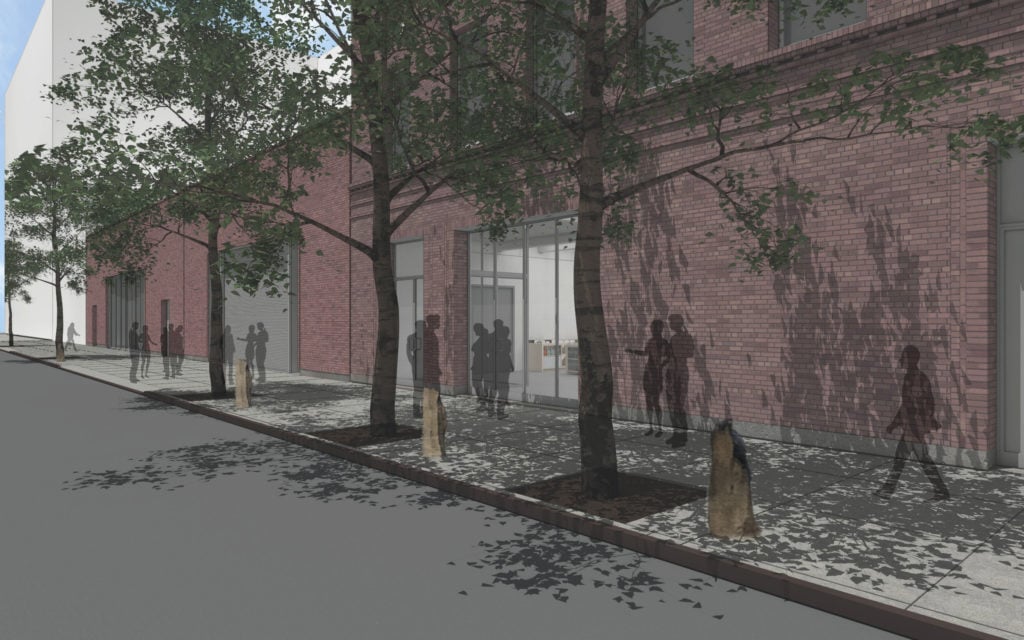
A rendering of the future Dia:Chelsea location. Image courtesy of the Dia Art Foundation.
Let’s talk about your building plans. By the time you arrived in 2015, Dia’s previous director had already gathered momentum to raze its three Chelsea buildings and build a new museum in their place—but you stunned everyone by saying you weren’t interested in going forward with that plan after all, and instead wanted to focus on creating programming for the existing sites. What was it that spurred you to put your hands on the brake? That was a pretty bold move for a brand-new director.
To be honest with you, sometimes you jump into these things—it’s more instinct. After visiting these buildings that seemed so quintessentially Dia, I couldn’t imagine building something new. Sure, one could build a kind of state-of-the-art “factory,” but that would be ridiculous—I couldn’t imagine a new building that would have that same quality, where the architecture steps back and the art is able to step forward. There’s a kind of humility to those sites. They’re not announcing, “I am a great space for art.” They often have great light because, quite simply, they were trying to save money on electricity by enabling their workers to work without artificial light. They also have very strong reinforced floors because they had heavy equipment that needed that kind of suspension.
Dia has never been one centralized space—we’ve always had multiple buildings and sites. We’re very different from the Guggenheim or MoMA, where we think of specific buildings as being the landmark institutions. Dia has always followed a different route, which was finding spaces where the artists could share their vision with us.
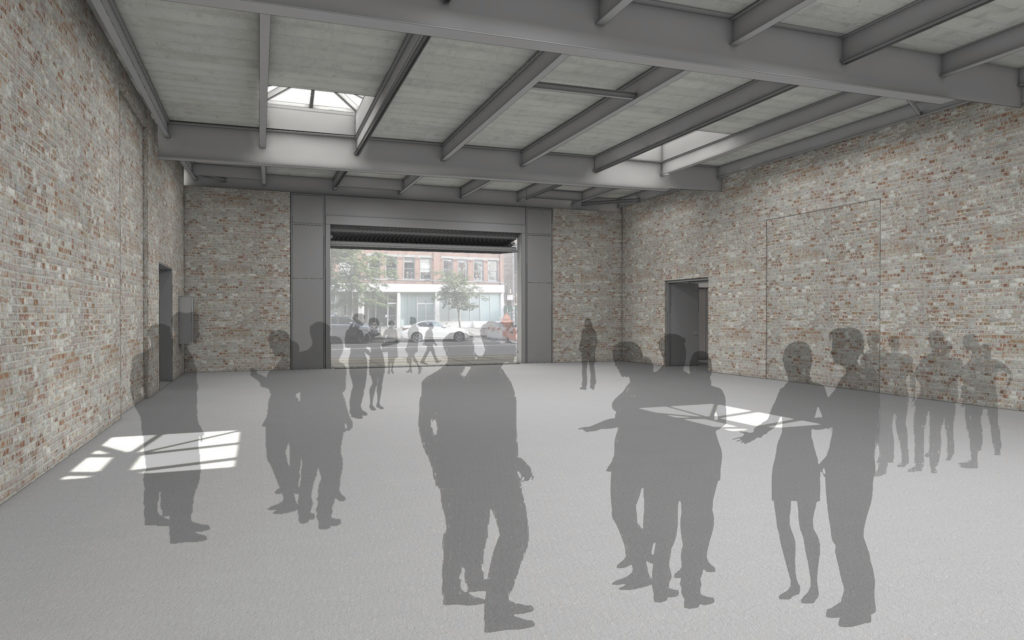
A rendering of the future Dia:Chelsea location. Image courtesy of the Dia Art Foundation.
Will your plan to join the three Chelsea buildings together be less costly than Vergne’s plan to create a brand-new museum?
To be honest, I’m not sure. Whatever that budget was would probably be completely different now, anyway. But the other part of my thinking was that we absolutely needed to grow the endowment, because we’ve never been an institution that has been driven by ticket sales. We’re really about working with artists that we believe in, even if they’re not headline names. And the only way to do that is to feel secure in your funding.
Do you see the new combined Chelsea space as having a permanent collection that is carved out of the existing collection? Or will it have a new focus?
There is definitely an appetite to give more resources to new commissions. Over the years I’ve been here, we’ve had great commissions with people like Isabel Lewis, Joelle Tuerlinckx, and Allora & Calzadilla, and this way Dia works with artists to give them license to do things that perhaps they couldn’t necessarily do elsewhere. That might shape more of the program in Chelsea.
One trend we see in museum design these days is something I like to call the “future box,” where the institutions create vast, column-free spaces that they think could contain whatever crazy experiential things artists dream up in the coming years. MoMA, for instance, is placing one of these spaces at the heart of their new building, and then you have the Shed, which is essentially one big future box. Do you think this kind of space has any application for Dia?
I’d actually say no. I worked at Tate Modern for 12 years and I did many of the Turbine Hall commissions, which was all about allowing artists to do things that they’ve never done before. I think people often make the mistake of building spaces that they think will provide that effect, but there’s no such thing as a future-proof building, because, of course, artists are one day going to turn around and say, “We’re no longer interested in working on a grand scale.” They’ll want everything to be outside, or whatever it might be.
At Dia, the spaces that we work in have often been the spaces that artists like to work in—loft spaces, industrial spaces. Therefore whatever they’re making in the studio will probably work pretty well at Dia. Also, light is incredibly important. That we have two single-story buildings with natural light is a real asset, because if there’s one thing that is great for showing art it’s natural light, and that’s a pretty scarce resource in New York City.
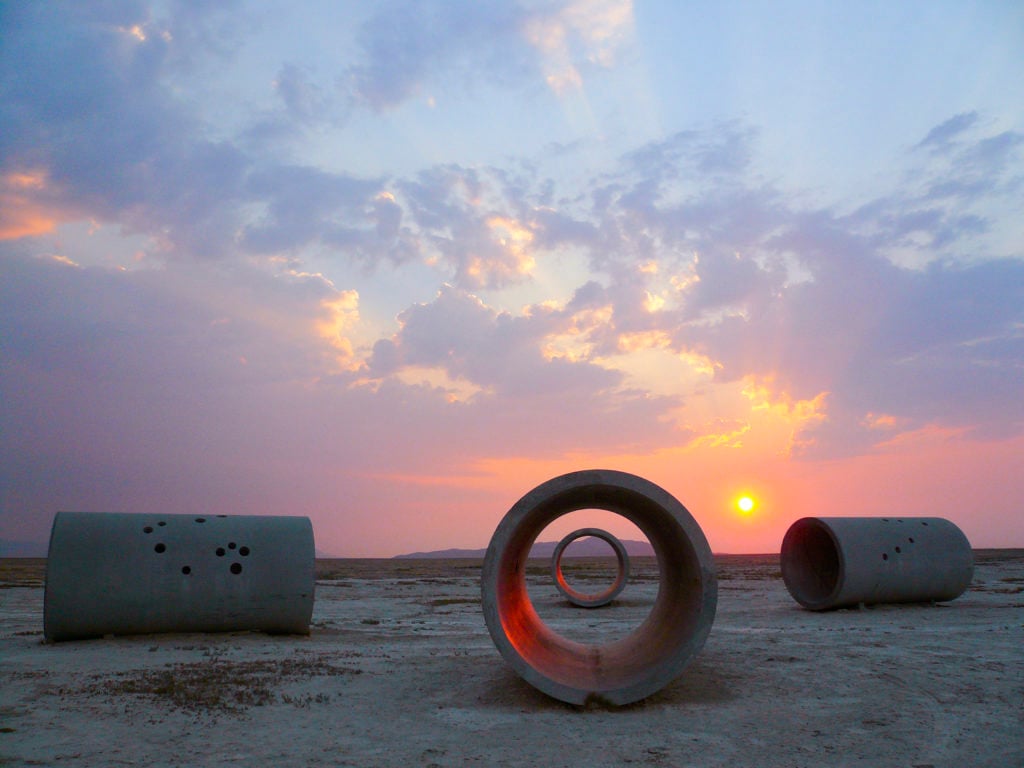
Nancy Holt’s Sun Tunnels, 1973-76, in the Great Basin Desert in Northwestern Utah, about four miles southwest of Lucin and nine miles east of the Nevada border. © Estate of Nancy Holt/Licensed by VAGA, New York, NY. Courtesy the Estate of Nancy Holt.
Speaking of artists heading outside the building, back in 2002 Dia completed a $100 million capital campaign that went in large part to fund Michael Heizer’s City and James Turrell’s Roden Crater, and these epic projects are now finally almost complete or nearing completion. I know that Dia no longer has a real governing role in these projects, but will you have an ongoing relationship with those Land Art monuments as they become more open to the public?
Currently we run Spiral Jetty, Sun Tunnels, Lightning Field, 7000 Oaks on 22nd Street, Max Neuhaus’s amazing sound piece in Times Square, The Vertical Earth Kilometer in Kassel, and the sites in SoHo [Walter De Maria’s Broken Kilometer and Earth Room]. So we have a pretty big footprint in this realm. Nancy Holt’s Sun Tunnels just came into the collection a year ago. But, you know, these projects are huge undertakings. At present we don’t have conversations with the artists you mentioned about taking on their sites. But I would say we’d be incredibly excited to think about whether there’s a new project that we’d want to commission for the future.
Very interesting.
Land Art didn’t necessarily die in 1974. How would we want to think about that now, especially given the complex ecological situation that we’re in? What would be an appropriate Land Art work for the current moment? This is definitely something we’re exploring with Jennifer Allora and Guillermo Calzadilla with the project in Puerto Rico, which was about solar resources and a specific landscape that had been affected by the island’s big chemical industries. That might be more exciting for us at this point.
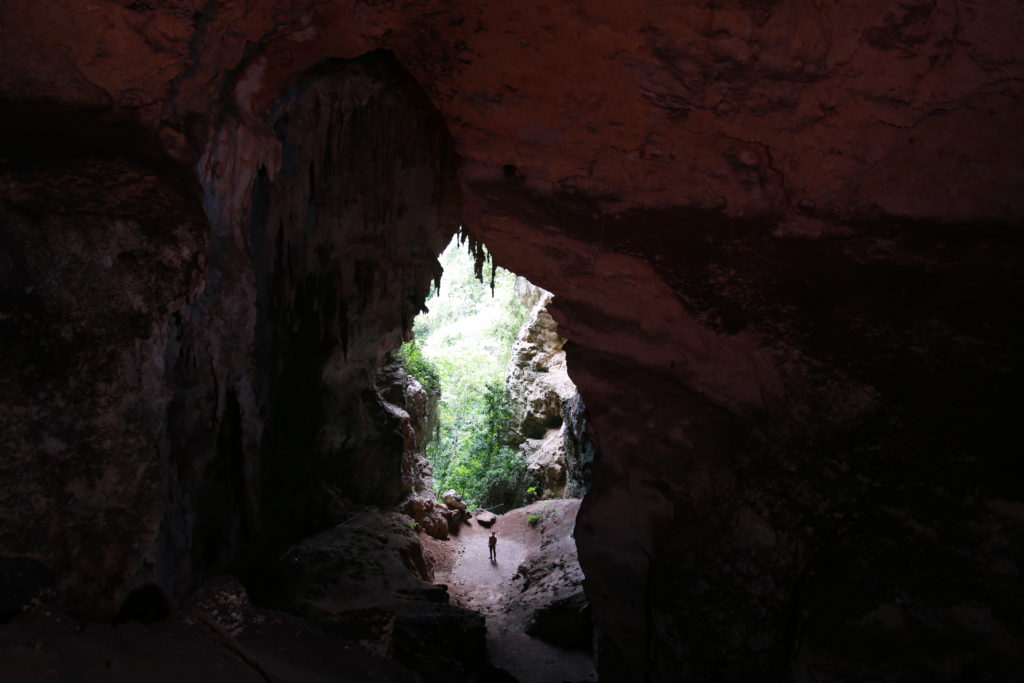
Allora & Calzadilla’s Puerto Rican Light (Cueva Vientos). 2015. Photo courtesy of the artists and the Dia Art Foundation.
That would be exciting, because while Land Art may not have disappeared in 1974, but it also hasn’t exactly been in vogue in contemporary art today.
No.
How would Dia go about doing something like that? Are there artists you’ve identified that you would like to work with?
We’d approach it in the same way that we go about all commissions. In some cases we’re actively sending artists out to Land Art sites and having them think about what their legacy means in this moment in time. We’ve been working for some time with the Brazilian artist Renata Lucas. Sometimes it’s very speculative: “We’re interested in you, come and spend some time with us.” I always tell people The Lightning Field took almost 10 years to create, which is not at all surprising when you visit it. Works that are intended to last forever obviously take some time to gestate. To my mind, it seems like an incredibly vital and poignant time to be thinking about this.
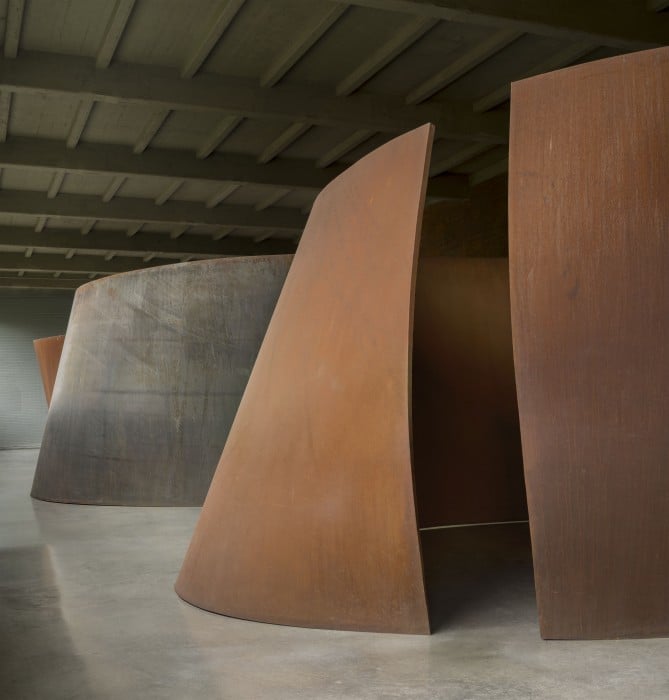
Richard Serra, installation view at Dia:Beacon. Richard Serra/Artist Rights Society (ARS) New York. Photo: Bill Jacobson Studio, NY.
One thing that you mentioned earlier was fundraising, and it seems you are secretly an extremely good fundraiser. When you announced your $78 million capital campaign last June you had already raised $60 million, an impressive haul to begin with. Now you’ve just announced that you’ve already raised $72 million and will raise your target to $90 million, I suppose not to make it too easy for yourself. What is the secret to fundraising well?
Well, I have an amazing team who work with me. But I think we also have a really clear mission, and that makes it—I wouldn’t say easy, but it certainly makes it far easier.
Dia is not for everybody, there is no doubt about that. If you’re looking for some good parties or glamour, we’re not the place for you—we barely even have openings. But if you’re really convinced by the art that we show and the way we work with artists and our dedication to art over time, then perhaps there is no other place you’d want to be involved. It’s a matter of finding the right people. There is no other formula.
Before Tate I worked at the ICA Boston, the MCA Chicago, some really great places, but there was always a little bit of antagonism going on between you and the institution. Dia has this sort of absolute devotion to it, and I think that’s true of the people who support it as well. There’s a sense that this is something much bigger than any of us.
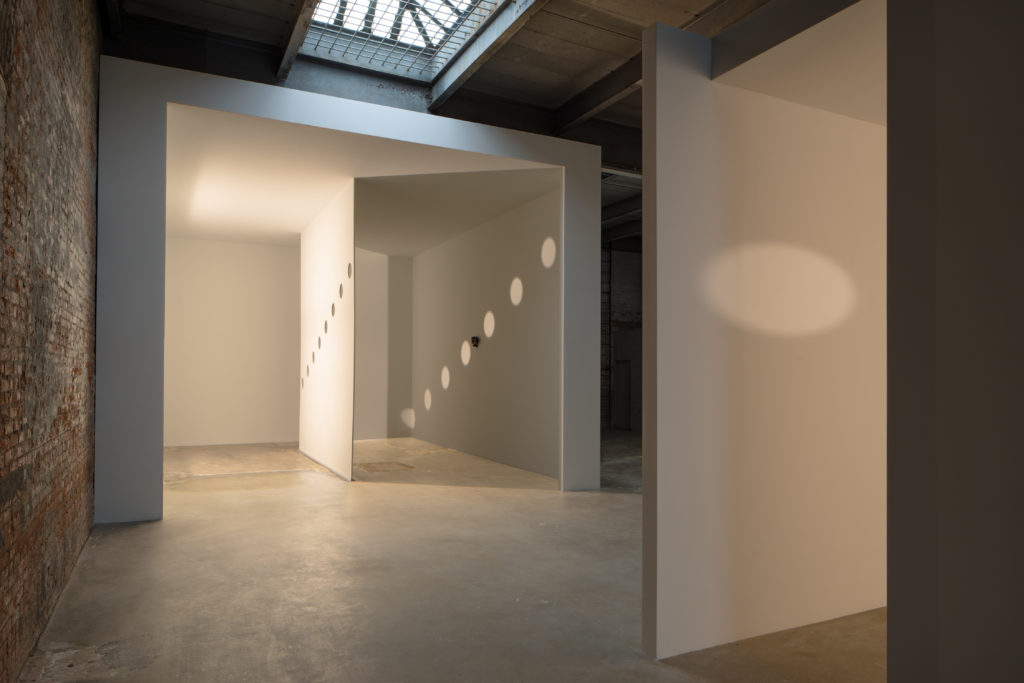
An installation view of Nancy Holt’s show at Dia:Chelsea. © Holt/Smithson Foundation/Licensed by VAGA at Artists Rights Society (ARS), New York. Photo: Bill Jacobson Studio, New York, courtesy Dia Art Foundation, New York
Because of his grand ideas for Dia’s expansion, your predecessor was also trying to raise as much money as possible, and in pursuit of that deaccessioned a suite of Cy Twombly drawings at Sotheby’s. There was a real outcry at the time, including from Dia founders Heiner Friedrich and Fariha de Menil Friedrich. Over the six years since that sale, the stance towards museum deaccessions has shifted a bit, with some directors arguing that having an overabundance of art in storage is actually not beneficial. Is deaccessioning something that you would consider, to shift around the collection and make space for new art?
No. Our collection is very focused—we have fewer than 50 artists in the collection, which for most institutions is an unthinkably small number, and we collect them in depth. That’s very much the mission. So I can’t see the collection growing even to 100 artists—probably it never will—and therefore there is a very different kind of relationship.
We had an incredible gift of more than 20 works by [Robert] Ryman a couple of years ago, which speaks to our close relationship with the Ryman family and to Bob Ryman before he passed away. We’ve done multiple exhibitions, we have a permanent display of his work in Beacon, and we’ve produced numerous books on his work—that goes way beyond how most institutions work with the artists that they collect. I wouldn’t use the word “family,” but these are people we’re in communication with almost on a weekly basis, and in some cases we hold the vast majority of their seminal work, like with Fred Sandback or John Chamberlain or Walter De Maria. And now indeed this continues with people like Dorothea Rockburne and Anne Truitt and Mary Corse.
So, with this comes a responsibility that is very different to a typical museum collection. When I went to Tate, there were thousands of artists in the collection and dozens more who I did exhibitions with. It’s very different from the way in which we work with artists, their families, and their estates at Dia.
What do you think a new generation of artists, and a new generation of curators, needs from Dia today?
I actually think a lot of artists need what we have always given: support and time. We often do repeat exhibitions. If there is a project that an artist wants to do in Bangalore and it’s actually something we think is just the most outstanding idea, then we’ll support that. Unfortunately, we don’t have the resources that Dia had back in the 1970s when we had the Schlumberger oil fortune behind the institution, but what we have and what we raise goes towards supporting the artists that we believe in.
Dia:Beacon. Photo by Bill Jackson, courtesy of the Dia Art Foundation.
It would seem to me the board is very lucky to have you. Which makes me wonder: the museum landscape is often a game of musical chairs for talented directors, and you worked at a number of institutions before taking over Dia. Do you feel that you’re in a place where you see a compelling amount of future growth and potential development for yourself?
Yes. Right now we’ve undertaken a long-term project with our spaces, from Chelsea to Soho to Beacon to these potential unknown projects that I hope will happen somewhere else in the world. I wake up in the morning and I know what we’re about.
Unfortunately, so often the catalogues that arrive in my inbox and the exhibitions that I see make me feel, “Okay, the resources and the money and the effort that went into that was perhaps not well spent.” I think we could all be doing a little less a lot better. It’s something that I really appreciate about Dia, this kind of historical restraint. In fact, I often worry that we’re doing too much. Let’s not try and be everything to everyone, and let the other extraordinary institutions in New York—and in the US, for that matter—do what they do well. That’s what makes visiting these institutions such a pleasure—to enter into the world of a particular place in a way that you would never see somewhere else.